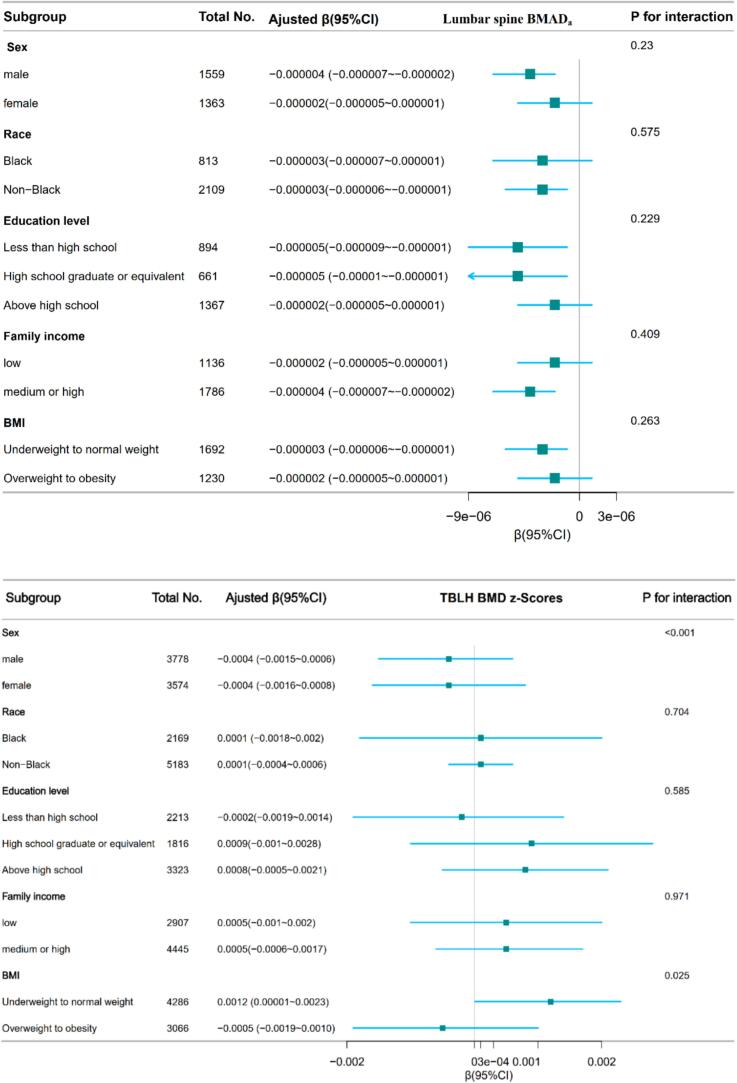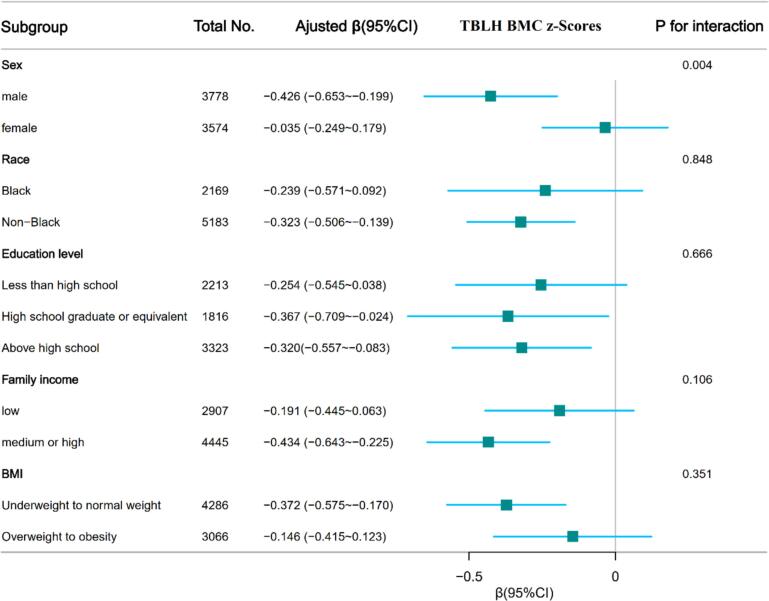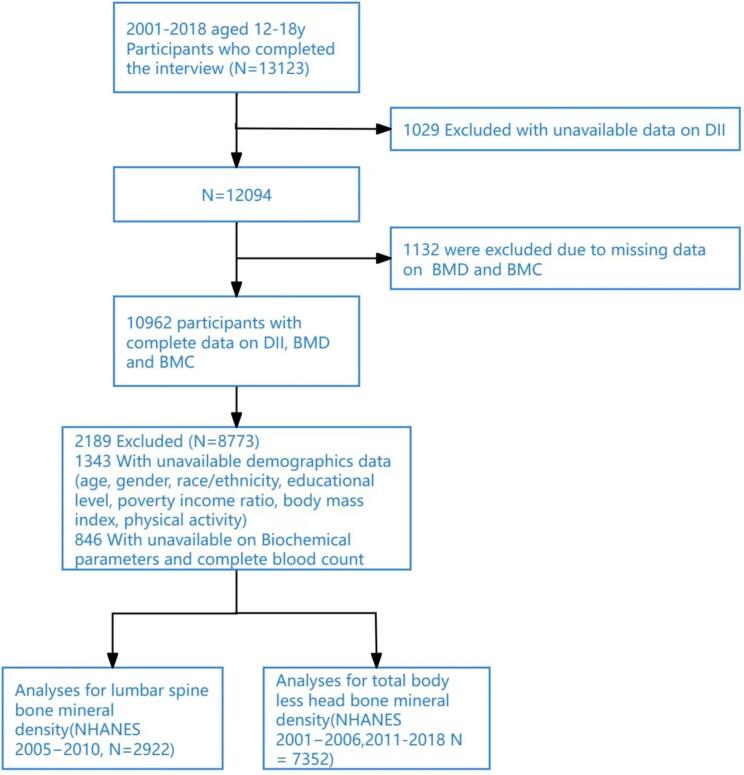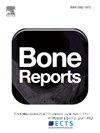The association between dietary inflammatory index and bone health in US adolescents: Analysis of the NHANES data
IF 2.6
Q3 ENDOCRINOLOGY & METABOLISM
引用次数: 0
Abstract
Introduction
Adolescents with a lower peak bone mineral density (BMD) and bone mineral content (BMC) have an elevated risk of osteoporosis in adulthood. The impact of diet on bone health, particularly its role in managing inflammation, which is a key factor in bone health, is gaining wider recognition. Despite evidence that anti-inflammatory diets can enhance bone health, the link between the dietary inflammatory index (DII) and bone health among US adolescents has not been thoroughly investigated. This study aimed to evaluate the correlation between DII score and bone health in this population.
Methods
This cross-sectional study used data from the National Health and Nutrition Examination Survey (NHANES) of US adolescents aged 12–18 years, spanning surveys from 2001 to 2018. The DII was derived from dietary recall data obtained through questionnaire interviews. Bone health was assessed through total body less head (TBLH) BMD and BMC z-scores and lumbar spine bone mineral apparent density for age (BMADa).
Results
The study comprised 8773 adolescents with a mean age of 14.94 ± 1.97 years, 52.2 % were male. Multivariate linear regression analysis revealed a negative correlation between DII and lumbar spine BMADa (β = −0.000003, 95 % confidence interval [CI], −0.000005 to −0.000001; P = 0.001).This significant association remained robust when DII was treated as a categorical variable. Compared with individuals in quartile 1(Q1) DII scores (−3.71 to 1.04), those in Q4 (3.37 to 5.04) had lower BMADa, with a regression coefficient of −0.00002 (95 % CI, −0.00003 to −0.000007, P < 0.001). DII was negatively correlated with TBLH BMC z-scores; however, the difference was not statistically significant. Subgroup analyses showed that DII was associated with lumbar spine BMADa and TBLH BMC z-scores in participants who were male, non-black, with a higher educational level, with a high family income, and underweight to normal weight. We found no significant association between DII and TBLH BMD z-scores.
Conclusion
The findings from this cross-sectional analysis indicate a significant association between the DII and bone health among adolescents in the US, with a notable impact in males and non-black. These insights underscore the importance of adopting dietary patterns to mitigate inflammation and to support optimal bone health and metabolism.



美国青少年饮食炎症指数与骨骼健康之间的关系:NHANES数据分析
简介峰值骨矿物质密度(BMD)和骨矿物质含量(BMC)较低的青少年成年后患骨质疏松症的风险较高。饮食对骨骼健康的影响,尤其是饮食在控制炎症(骨骼健康的关键因素)方面的作用,正得到越来越广泛的认可。尽管有证据表明,抗炎饮食可增强骨骼健康,但对美国青少年的饮食炎症指数(DII)与骨骼健康之间的联系尚未进行深入研究。本研究旨在评估该人群中 DII 分数与骨骼健康之间的相关性:这项横断面研究使用了美国国家健康与营养调查(NHANES)的数据,调查对象为 12-18 岁的美国青少年,调查时间跨度为 2001 年至 2018 年。DII 是通过问卷访问获得的饮食回忆数据得出的。骨骼健康通过全身减去头部(TBLH)的骨密度(BMD)和骨密度表观密度(BMC)z-分数以及腰椎骨矿物质表观密度(BMADa)进行评估:研究对象包括 8773 名青少年,平均年龄为(14.94 ± 1.97)岁,其中 52.2% 为男性。多变量线性回归分析显示,DII与腰椎BMADa呈负相关(β = -0.000003,95%置信区间[CI],-0.000005至-0.000001;P = 0.001)。在男性、非黑人、教育程度较高、家庭收入较高、体重不足至正常的参与者中,与四分位 1(Q1)的 DII 分数(-3.71 至 1.04)相比,四分位 4(3.37 至 5.04)的 BMADa 较低,回归系数为-0.00002(95 % CI,-0.00003 至 -0.000007,P a 和 TBLH BMC z 分数)。我们发现 DII 与 TBLH BMD z 分数之间没有明显关联:这项横断面分析的结果表明,美国青少年的 DII 与骨骼健康之间存在显著关联,对男性和非黑人的影响尤为明显。这些见解强调了采用饮食模式减轻炎症、支持最佳骨骼健康和新陈代谢的重要性。
本文章由计算机程序翻译,如有差异,请以英文原文为准。
求助全文
约1分钟内获得全文
求助全文
来源期刊

Bone Reports
Medicine-Orthopedics and Sports Medicine
CiteScore
4.30
自引率
4.00%
发文量
444
审稿时长
57 days
期刊介绍:
Bone Reports is an interdisciplinary forum for the rapid publication of Original Research Articles and Case Reports across basic, translational and clinical aspects of bone and mineral metabolism. The journal publishes papers that are scientifically sound, with the peer review process focused principally on verifying sound methodologies, and correct data analysis and interpretation. We welcome studies either replicating or failing to replicate a previous study, and null findings. We fulfil a critical and current need to enhance research by publishing reproducibility studies and null findings.
 求助内容:
求助内容: 应助结果提醒方式:
应助结果提醒方式:


